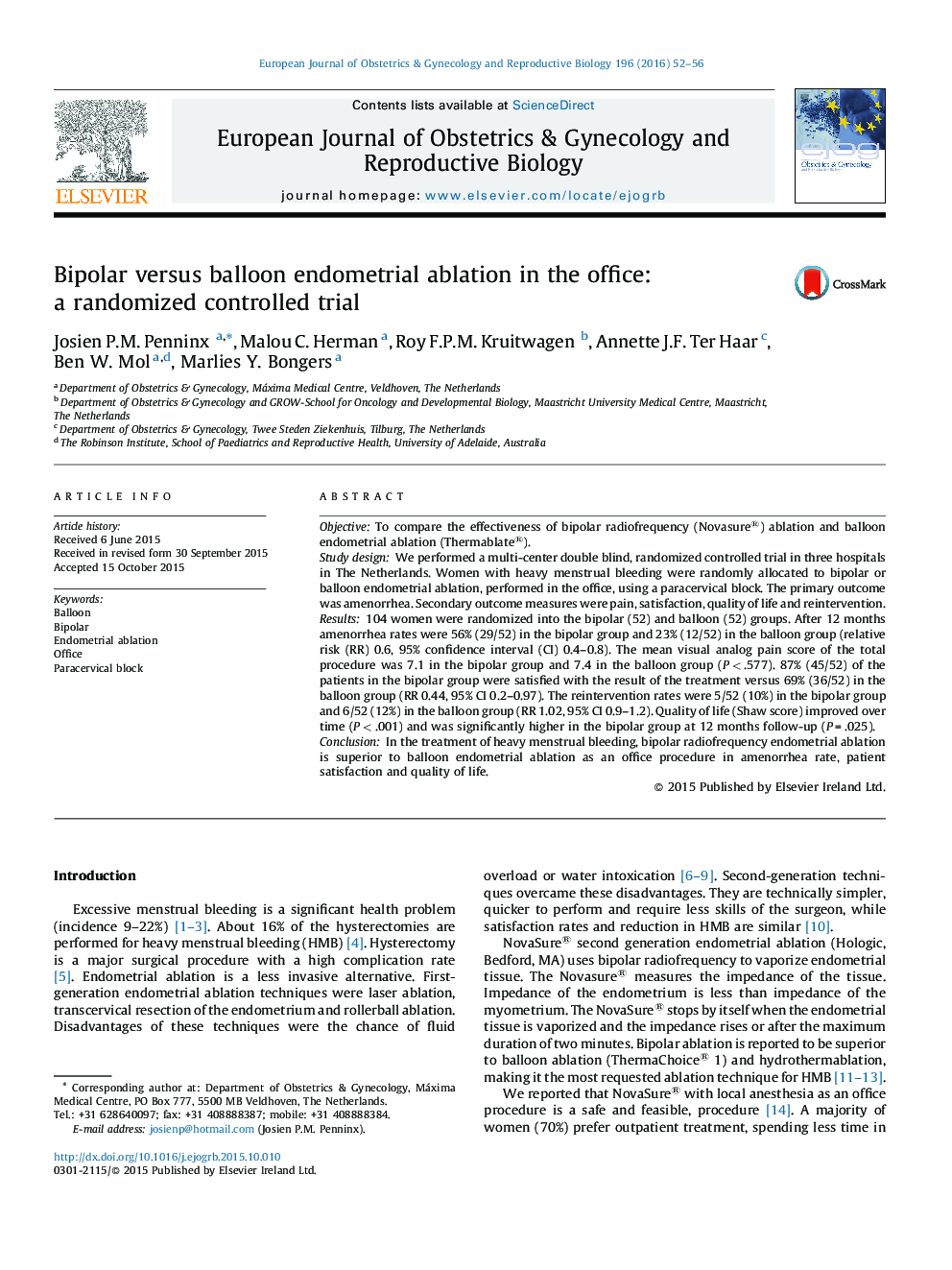| کد مقاله | کد نشریه | سال انتشار | مقاله انگلیسی | نسخه تمام متن |
|---|---|---|---|---|
| 3919419 | 1599785 | 2016 | 5 صفحه PDF | دانلود رایگان |
ObjectiveTo compare the effectiveness of bipolar radiofrequency (Novasure®) ablation and balloon endometrial ablation (Thermablate®).Study designWe performed a multi-center double blind, randomized controlled trial in three hospitals in The Netherlands. Women with heavy menstrual bleeding were randomly allocated to bipolar or balloon endometrial ablation, performed in the office, using a paracervical block. The primary outcome was amenorrhea. Secondary outcome measures were pain, satisfaction, quality of life and reintervention.Results104 women were randomized into the bipolar (52) and balloon (52) groups. After 12 months amenorrhea rates were 56% (29/52) in the bipolar group and 23% (12/52) in the balloon group (relative risk (RR) 0.6, 95% confidence interval (CI) 0.4–0.8). The mean visual analog pain score of the total procedure was 7.1 in the bipolar group and 7.4 in the balloon group (P < .577). 87% (45/52) of the patients in the bipolar group were satisfied with the result of the treatment versus 69% (36/52) in the balloon group (RR 0.44, 95% CI 0.2–0.97). The reintervention rates were 5/52 (10%) in the bipolar group and 6/52 (12%) in the balloon group (RR 1.02, 95% CI 0.9–1.2). Quality of life (Shaw score) improved over time (P < .001) and was significantly higher in the bipolar group at 12 months follow-up (P = .025).ConclusionIn the treatment of heavy menstrual bleeding, bipolar radiofrequency endometrial ablation is superior to balloon endometrial ablation as an office procedure in amenorrhea rate, patient satisfaction and quality of life.
Journal: European Journal of Obstetrics & Gynecology and Reproductive Biology - Volume 196, January 2016, Pages 52–56
